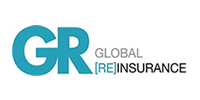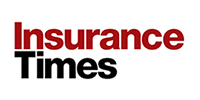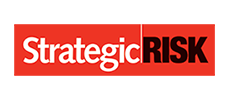Although larger insurers understandably take advantage of economies of scale, smaller firms have obtained profitable results for the first time in three years thanks to specialist know-how and improvements in loss and expense ratios
This article is from the Top 50 Insurers 2025 supplement – click here to read the full report.
Insurance Times’ annual Top 50 Insurers report features the largest non-life insurers operating across the UK and Gibraltar, depicting a spectrum of firms that control more than £81bn of gross written premium (GWP).

But what role does size play when it comes to delivering profitable underwriting results? And does a big book of business really mean bigger profits?
To help answer this question, market intelligence firm and Top 50 Insurers data provider Insurance DataLab analysed the latest underwriting results of the non-Lloyd’s insurers in this year’s report and compared them against the rest of the market.
Based on each insurer’s latest Solvency and Financial Condition Report (SFCR), the 2025 cohort of the UK’s largest general insurers featured by Insurance Times reported an aggregate combined operating ratio (COR) of 96.1% for 2024/25.
This marks a return to underwriting profit – driven by a 5.4 percentage point improvement in the expense ratio – after these same insurers fell to an underwriting loss in the previous year with a COR of 101.6%.
Despite this upturn in performance for 2025’s report, those insurers outside of the 50 largest insurance companies in the UK and Gibraltar managed to report a stronger underwriting result with a COR of 95.2% for 2024/25 – this is 0.9 percentage points better than their larger peers.
This is a significant improvement on the loss-making 105.8% these insurers reported for 2023/24, marking the first time in three years that this demographic has managed to report an underwriting profit.
These improving fortunes of smaller sized insurers have been driven by gains in both the loss and expense ratios. Indeed, those insurers outside of the top 50 knocked some 7.8 percentage points off their aggregate loss ratio. The expense ratio, meanwhile, improved by 2.8 percentage points.
Success for specialists
A lot of this outperformance compared to their larger peers will be driven by the more specialist nature of the business lines insurers outside of the Top 50 Insurers list tend to deliver.
Larger insurers often operate in more mainstream markets that can deliver greater volume, even if that is at the expense of underwriting profit margins.
The effect of this see-saw is most clearly seen in the performance gap on loss ratios.
Insurers outside of the Top 50 Insurers ranking reported an aggregate loss ratio of 60.3% for 2024/25. This is some five percentage points better than their larger peers and is a major driver of their improved underwriting performance.
It is worth noting, however, that the specialised nature of these smaller insurers also presents its own challenges.
A lack of diversification means that these insurers often find themselves facing an increased level of volatility in their overall book of business – and this can be seen in COR performance.
This year’s cohort of Top 50 Insurers ranked firms reported volatility in their COR of 2.5 percentage points over the last four years, while those outside of Insurance Times’ annual list had CORs nearly twice as volatile at 4.9 percentage points.
These smaller insurers are also at a disadvantage when it comes to expenses, with their larger competitors more able to benefit from the economies of scale that come with having a bigger book of business.
This is evidenced by an expense ratio of 34.8% for 2024/25, compared with an average of 30.7% for those insurers that make up the Top 50 Insurers list.
Indeed, smaller insurers reviewed by Insurance DataLab have reported a higher expense ratio than their larger peers in each year since the market research firm started this annual analysis around five years ago.
Economies of scale
But while there is a difference in performance for those inside and outside Insurance Times’ Top 50 Insurers ranking, what difference does size make for those insurers that did make this year’s list?
Unsurprisingly, the economies of scale that appear across the market are also seen across the top 50 insurers – with the 10 largest insurers in this year’s research reporting one of the lowest aggregate expense ratios at just over 30%.
This outperformance has been delivered consistently, with these insurers clearly benefiting from operating with a much larger premium base and within a larger group structure that allows for more centralised operations in certain areas.
Indeed, the only group within the Top 50 Insurers to report a better expense performance was those insurers placed between 41 and 50 in the ranking – this demographic had an aggregate expense ratio of 26% for 2024/25.
Read: UKGI market returns to underwriting profit as expense management pays dividends
Read: Briefing – Why getting back to basics is the only route forward for motor insurance
Explore more insurer related content here, or discover more news analysis here
This bucks the trend of recent years, which has seen these mid-size insurers reporting a generally higher expense ratio – although this year’s results have been skewed by a number of large reinsurance deals that have impacted the level of expenses being reported.
In contrast to this expense performance – but in keeping with Insurance DataLab’s overall findings – the largest insurers in the UK general insurance (UKGI) marketplace once again reported a higher than average loss ratio.
For 2024/25, these insurers reported an aggregate loss ratio of 67.8%, some 17.4 percentage points ahead of those insurers ranked 31 to 40, which reported an aggregate loss ratio of 50.5%.
Despite this, the low expense base from which the top 10 UKGI insurers operate meant that most of the largest insurers were still able to report a profitable COR for 2024/25 – this cohort reported an aggregated COR of 98%.
This figure was, however, still ahead of the average COR across the entirety of the Top 50 Insurers report, with only those ranked 41 to 50 reporting a worse COR.
Further down the ranking, those insurers placed 11 to 20 reported an aggregate COR of 90.8%, helped by a much-improved loss ratio, while the 21 to 30 cohort recorded a COR of 94.7%.
The best performance, however, was reported by those insurers ranked 31 to 40, buoyed by a high performing loss ratio and despite having an above average cost base linked to an expense ratio of 38.3%.
Strategies for leading the pack
This variation underlines that while size brings cost advantages, it is not the only path to success in UKGI, with underwriting discipline and portfolio focus also playing a key role in differentiating performance.
For mid-ranking insurers, sustaining profitability will require sharper pricing and tighter claims management, while smaller players will need to balance the rewards of specialisation against the risks of volatility.
Looking ahead, technology will play an increasingly decisive role – particularly when it comes to managing firms’ expense base and refining risk selection.
Generative artificial intelligence is already helping to reduce expense ratios and improve risk selection, but it is just one part of a wider shift in market dynamics. Other headwinds include growing regulatory pressure, continued claims inflation and intensifying competition.
Together, these forces will shape how both large and small insurers adapt their strategies.
The real test for the market over the next few years will be whether firms can translate these advantages into sustainable underwriting profits. And the winners will be those that can balance efficiency, specialisation and adaptability in an increasingly complex market.

Hosted by comedian and actor Tom Allen, 34 Gold, 23 Silver and 22 Bronze awards were handed out across an amazing 34 categories recognising brilliance and innovation right across the breadth of UK general insurance.






















































No comments yet